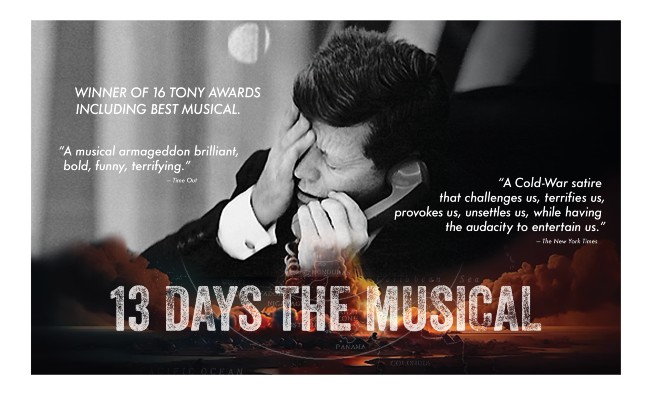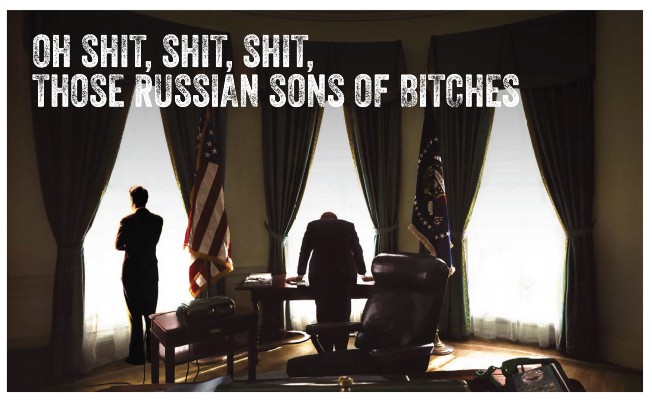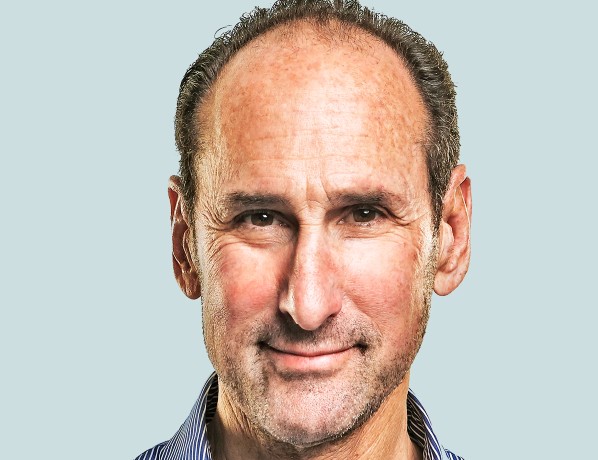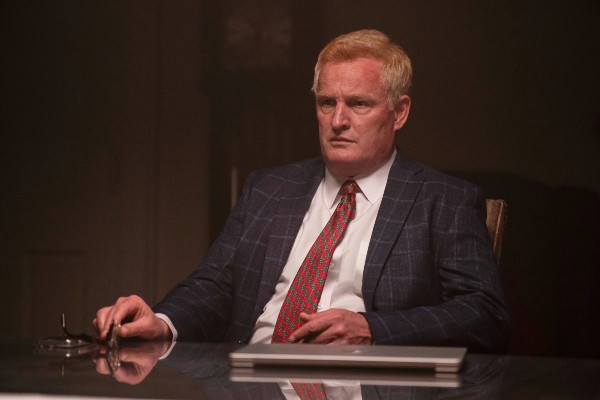“Got Milk?”
Got AI?
Got concerns over the threat of nuclear war?
While these three questions seem ridiculously disjointed, they actually connect to one another with considerable relevance in the context of an ambitious new project that’s the brainchild of Rich Silverstein, co-founder of Goodby Silverstein & Partners (GS&P)–the agency behind the iconic “Got Milk?” campaign launched back in 1993 for the California Milk Processor Board.
“Got Milk?” has endured over the years and become the stuff of ad legend, starting with the lauded Michael Bay-directed “Aaron Burr” commercial featuring a historian unable to answer a big-money trivia question due to a mouthful of a peanut butter sandwich. If only he had a glass of milk nearby.
As for the question of AI, the issue is how to best deploy it now in such a way that the human creative spark that spawned work like “Got Milk?” is not compromised.
Regarding nuclear war, Silverstein and his colleagues at GS&P have teamed on “13 Days: The Musical (Or The Most Dangerous Moment in Human History),” an AI-aided exhibition/artistic experiment which opens at The Cube, San Francisco, today (10/16) on the 63rd anniversary of the Cuban Missile Crisis. The installation delves into the 13 harrowing days when the world stood on the brink of nuclear war–seen through the surreal lens of a Broadway musical in development. Eighty-nine large-scale floor images, narration, and four original songs created with GS&P creative director AJ Warren form the foundation for a future 35-song theatrical concept. The installation–which runs through November 16–functions as both an art exhibit and a creative rehearsal, blurring the line between documentation, development, and performance.
For the show, AI tools were used–merging Suno (for music composition), OpenAI (for scene visualization), and Google’s Veo3 (for video animation) with archival black-and-white footage, juxtaposing historical fact with imagined narrative.
Silverstein called this approach “an ethical middle ground between AI replacement and AI rejection”–using technology as a sophisticated pre-visualization tool to explore creative possibilities before human production begins. Silverstein harbors the hope that the installation will serve as a springboard for a Broadway show–replete with performers, musicians and the full ensemble of talent needed for such an undertaking. He envisions no AI in the mix for that production if it comes to fruition.
“13 Days: The Musical” has been dancing around in Silverstein’s head for 15 years. Well before then, back when he was a kid at the height of the Cuban Missile Crisis, Silverstein recalled being on a school bus thinking “this is the end of the world.” Living through that left an indelible impression that eventually led to creative inspiration. Add to that his love for Stanley Kubrick films, especially the seminal Dr. Strangelove or: How I Learned to Stop Worrying and Love the Bomb–which further nurtured a deep appreciation for “the absurdity of reality.” With “13 Days,” Silverstein saw the opportunity–like in Dr. Strangelove, “The Book of Morman” and “Hamilton”–to turn something complex and dark into entertainment, touching on uncomfortable truths in the process. “I always loved satire. This was my chance to play in that world.”
Silverstein further noted that the Cuban Missile Crisis was not only frightening but also had elements that were strangely humorous and musical. Silverstein quipped for example about the show’s opening in the White House’s Oval Office with President John F. Kennedy telling Attorney General Robert F. Kennedy that the Soviets had placed nuclear missiles in Cuba, punctuated by a rock ‘n roll refrain–”Shit, shit, shit, those sons of bitches Russians.” From there, we meet Khrushchev who sings a ballad about “throwing a hedgehog down Uncle Sam’s pants.” Then there’s a skeptical Joint Chiefs harmonizing ‘You’re screwed, screwed, screwed’ to a less than thrilled JFK rocking in his chair.
Silverstein added the chilling reality that the Soviets fell short one person’s needed approval to launch a nuclear torpedo at the U.S. from a submarine. “One guy saved the world” on what’s historically referred to as “Black Saturday,” related Silverstein.
And sadly the threat of annihilation remains relevant today with North Korea, for example, playing with nuclear missiles. Silverstein has not lost sight of the fact that his at times seemingly whimsical musical carries serious overtones. “Amid the satire and chaos, it never forgets the real stakes: two superpowers, one misstep from ending the world,” Silverstein affirmed.
He continued, “As crazy and absurd as all this seems, nothing was made up–proving once again that fact is stranger than fiction. ‘13 Days’ is equal parts spectacle and rehearsal–about leadership, brinkmanship, and the thin line between survival and show business.”
Adding to the inherent irony is the theme of existential crisis–not just reflected in prospects for nuclear war but potentially AI usurping human creativity, caring and empathy. In that latter vein, Silverstein said he used AI as a pre-vis tool of sorts for “13 Days” but has no intention to replace creatives and artists if the installation experiment becomes a full-fledged Broadway musical. He saw over the years at GS&P the importance of collaboration among talented people in building brands, among the priorities being the mesh of creativity and craft at the agency.
“13 Days” reaffirmed for Silverstein the value of teaming with talented artisans. Among the key contributors cited by Silverstein on “13 Days” were GS&P’s creative director Warren, editor Graham Willcox and digital artist Will Hung. For Silverstein, a major takeaway from his experience on “13 Days” was the sobering reality that you don’t do anything by yourself, that it’s imperative to work with high-caliber talent whom you respect. He’s learned during the course of his career that “people are dying to do something creative. You allow them to be the best they can be, you’ll get great work.”



